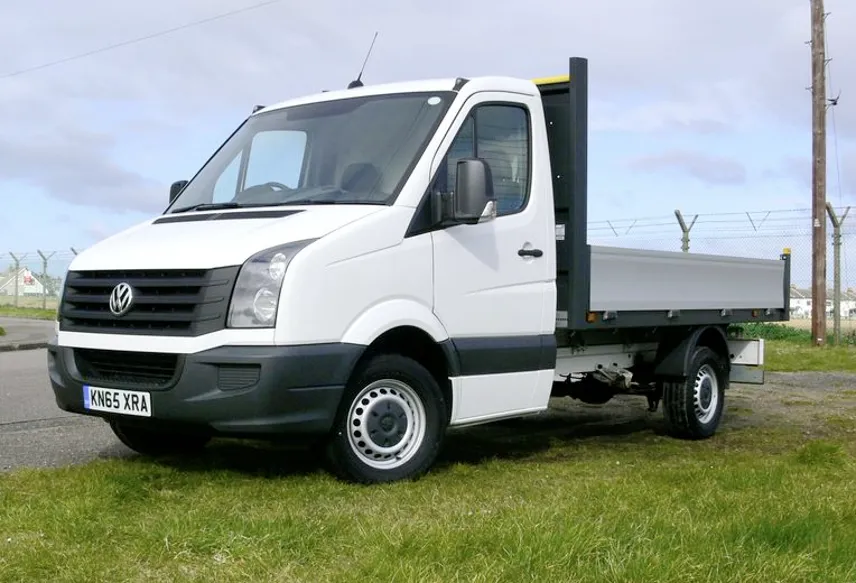Review
Fleets looking for dropside trucks basically have two routes to take. They can go for a decent mini-lorry such as the Nissan Cabstar or Fuso Canter, or they can opt for a van conversion such as the vehicle on test here, the Volkswagen Crafter.
There are advantages to each route – and it all depends on what the vehicle is expected to do in everyday life as to which is best.
The truck contenders are tough as old boots and built so strongly that they are likely to still be running after the fleet manager who bought them has retired. They are cheap too. The equivalent Cabstar, for example, costs £20,900 ex-VAT as opposed to the £28,470 pricetag of the vehicle on test here.
But there are drawbacks. Ride and handling are so harsh on the lorries that no driver would really want to operate them over long distances. They are pretty basic in the cabs, too, and lack many of the little refinements that the average van driver is now used to having as a matter of course.
Our money is on the van conversions every time, as they are simply streets ahead in the technology stakes – and thoroughly pleasant to drive.
The Crafter is due to be replaced by a completely new model next year, but that doesn’t detract from the current one, which comes off the same line as the revered Mercedes-Benz Sprinter, albeit with a Volkswagen engine fitted.
Our test truck proved to be typical Volkswagen fare – superb build quality, with lots of standard goodies and excellent seats, with plenty of solid support.
In the rear end, the truck body feels quite up to dealing with the rigours of an everyday fleet life – and these trucks typically face a pretty tough time when used in a work capacity on the roads. There’s a non-slip loadfloor, an extremely chunky headboard and plenty of lashing points all round. Payload is just under that of the rival Cabstar.
Volkswagen offers a single 2.0-litre four cylinder turbodiesel powerplant in the Crafter and our test model produced 136hp and a meaty 250lb-ft of torque, spread over a peak rev period of 1,572-2,250.
This adds up to an awful lot of pulling power and it’s hard to believe that such a diminutive engine can feel so strong. Technology advances mean that there is less correlation between cubic centimetres and power output.
Fuel economy isn’t exactly dazzling, at 31mpg on the combined cycle, but then this truck isn’t expected to undertake that many long journeys, so we won’t mark Volkswagen down on this point. It’s on a par with the Cabstar, anyway.
The cab area is nicely laid out and includes such goodies as cruise control, air conditioning, driver’s armrest and five drinks holders. Our test vehicle also had, as extra, a climate control system at a weighty £1,290. Meanwhile there is the usual array of safety devices on board to help keep driver and occupants safe.
On the downside, there isn’t a window in the rear of the cab. As the body protrudes outwards wider than the cab, the rear corners of the vehicle are not visible in the mirrors when it is straight. And there weren’t any reversing sensors fitted, so manoeuvring proved to be a challenging excercise.
This was a shame, as that safety problem rather tended to spoil what was otherwise a very pleasant test week.
Verdict
While the high front-end price and a running cost around 5p per mile higher than rivals may put some fleet buyers off, there is no doubt that its superior driver experience means the Crafter dropside is well worth considering.





 Diesel
Diesel












